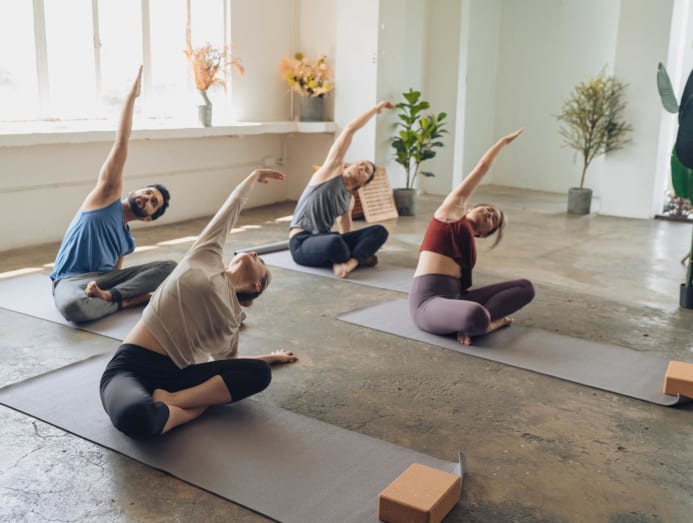Advertisement
Dr Pooja Lakshmin, a psychiatrist who specialises in women’s health, says you don’t need bubble baths to beat burnout. Here’s what she says to do instead.

Rethinking how you take care of yourself can slowly transform your quality of life, says US psychiatrist Dr Pooja Lakshmin. (Photo: iStock/fotostorm)
26 Mar 2023 07:23AM (Updated: 26 Mar 2023 07:23AM)
When she was 28, Dr Pooja Lakshmin blew up her life: She left a less-than-a-year-old marriage, dropped out of her psychiatry residency at the Stanford University School of Medicine and joined a cult in San Francisco that practiced healing through orgasmic meditation.
“My Indian parents were really proud of me,” she said, sarcastically, in a recent interview with The New York Times.
At the time, she said, she felt “powerless”.
“I had gone into medicine with this belief that I was going to help people, but instead, I would have a patient who was unhoused, and the only thing that I could offer them was Zoloft.”
With its focus on female pleasure, the cult fed Dr Lakshmin’s growing interest in women’s health. But after nearly two years immersed in the group’s spiritual practices, she felt just as disillusioned as before.
She moved back into her parents’ home near Reading, Pennsylvania, and started to rebuild her life. “I turned 30 in my childhood bedroom,” she said. “I was depressed and almost suicidal.”
Now, a decade later, Dr Lakshmin is a clinical psychiatrist in Austin, Texas, who works mainly with women, including mothers; an assistant professor of psychiatry, specialising in women’s health, at the George Washington University School of Medicine; and an entrepreneur.
She has also just published her first book Real Self-Care: A Transformative Program for Redefining Wellness (Crystals, Cleanses, and Bubble Baths Not Included), which draws on case studies from her practice and research to explain why the “self-care” practices offered to women today aren’t working.

The multibillion-dollar industry, which sells crystals and massages as balms for burnout and depression, is not unlike her experience of joining a cult, she says — and she calls it all “faux self-care” because it consists of quick fixes that do not improve individual women’s lives nor address larger societal problems that can create stress and anxiety, Dr Lakshmin explains.
“We’re living in a society that makes it really difficult for you to prioritise your mental health and your well-being, so we’re constantly fighting upstream,” she said.
Commercialised faux self-care products claim to fill in the gaps in access to healthcare or therapy by convincing consumers “that if you do more of this one particular thing, eventually things will feel better — when in fact, the only purpose of a juice cleanse or a massage is to keep you buying more of the thing”.
The alternatives she suggests are tools for “real self-care” — which requires introspection to find the activities that are most fulfilling to you. (She said she hadn’t planned to write a self-help manual, but the book includes questions to ask yourself and exercises to get started.)
“There’s no shortcut,” Dr Lakshmin said. But rethinking how you take care of yourself can slowly transform your quality of life.
And crucially, she adds, as you align your individual choices and actions with your beliefs, you can help improve larger social systems that hold women back. Asking for a flexible work arrangement or parental leave could inspire an employer to rethink its policies, for example.
Here are four of her pieces of advice to get started.
IF IT MAKES YOU FEEL GOOD, TAKE THE YOGA CLASS
Despite what the subtitle of her book might suggest, Dr Lakshmin is not anti-bubble bath or spa treatment. It doesn’t really matter what activity you ha.ve identified to help you feel better, she said; “it’s how you actually do the thing”.

She describes a patient whose ostensible self-care practice was yoga, but practicing it wasn’t making her feel less stressed. Going to class became just another thing she needed to do and win at; she was obsessing over her progress on headstands and posting selfies in workout gear, waiting for likes to roll in. She was seeking self-worth without doing the work to figure out what activity would add more meaning to her life, Dr Lakshmin explained.
Maybe yoga would have been more fulfilling for this person if she hadn’t entered the class already worrying about her performance and feeling guilty about taking time away from her family. Or perhaps what she really needed to do with those hours was paint or write, because she valued creative pursuits and wasn’t making time for them.
“If you think of self-care as a goal, it becomes another task to check off the list,” Dr Lakshmin said. “But when you think about it as values and decisions that inform all of your different roles and activities, it can deeply impact the quality of your life.”
IDENTIFY YOUR VALUES
The hard part, Dr Lakshmin acknowledged, is figuring out what you want when you already have so many tasks to complete and people to care for.
She suggests starting with a thought experiment: Throw an imaginary dinner party. Think about what the party would look like if you had a few hundred dollars to spend. Would you want it to be a potluck? Would you have a theme and costumes? Or want guests to play icebreaker games?

“Reflect on that fantasy and think through the qualities that are being embodied in this dinner party,” she added. “Is it that you just want people to have fun? Or maybe it’s centered around authenticity and you want people to be having deep one-on-one conversations with each other.”
You can use those responses to come up with your list of values. If you found yourself wanting to play games to learn more about your imaginary guests, “then maybe that means making more time in your life to have meaningful connection with friends,” Dr Lakshmin said.
The goal is to begin to “set up work and family life in a way that allows for you to live by your values”. Inevitably, that will also mean saying no to activities that don’t align with them.
SET BOUNDARIES BY TAKING A PAUSE
Most people know that setting personal boundaries is an important facet of self-care. But often they are too easily breached — or too rigid, Dr Lakshmin said.
You may be clear that you do not work past 5 pm, but when your boss asks you to just do one more thing, that changes. When a cousin you don’t like asks you to come for a visit, you say “no” instinctively without thinking about whether it might be fun for the rest of your family.
Every time you are in a situation where a boundary might need to be asserted or bent, Dr Lakshmin suggests taking a pause instead of giving in to a knee-jerk reaction. Then, in that moment, you can choose among three potential responses: Yes, no or negotiation.
“A healthy boundary is not a brick wall,” she said. “It’s like the net that goes around a trampoline — it’s flexible.”
In her book, she gives the example of planning for the annual Thanksgiving vacation at your in-laws’ home at a time when you are bogged down at work and with small children. Rather than choosing between saying yes or no — both of which have pros and cons — you could negotiate, going for a shorter, more manageable period of time.

“As women, we feel like putting our needs first is selfish, so we end up saying ‘yes’ to things a lot,” Dr Lakshmin said. “But I’m also not advocating for everybody to move into a cabin in the woods, go completely Walden and never take care of anybody else.”
What matters, she said, is that you are giving yourself time to make a call that aligns with your values.
TURN THE VOLUME DOWN ON GUILT
Women are bound by many, often contradictory cultural expectations, Dr Lakshmin explained. We are asked to be good mothers who can support ourselves and our families — available, fun and warm all at once.
As a new mother, Dr Lakshmin is experiencing this tension now, wanting to spend time with her nine-month-old son but also needing (and wanting) to focus on rolling out her book. Either way, there is guilt that comes with prioritising one over the other, she said.
While it’s almost impossible to shut guilt off completely, Dr Lakshmin suggests thinking of it as being like a volume dial: You can accept the guilt that comes with prioritising work or family, but turn the emotion down and learn to live with it on in the background.
For Dr Lakshmin, that means choosing to get childcare over the weekends so she can work. “I can love my kid to death and also know that he’ll be okay with a sitter,” she said. “I’m allowed to focus on something else that is important to me.”
By Alisha Haridasani Gupta © 2023 The New York Times
This article originally appeared in The New York Times.
Source: New York Times/pc


